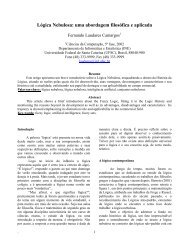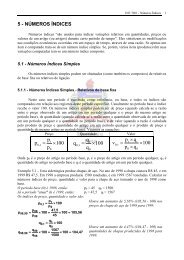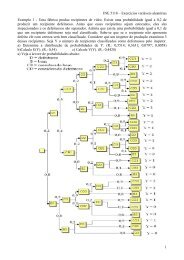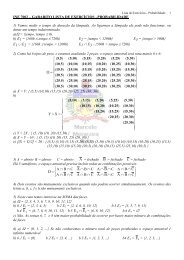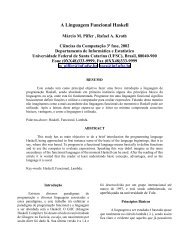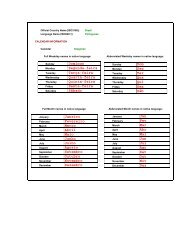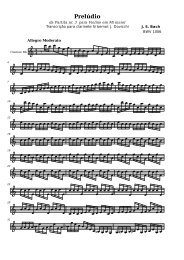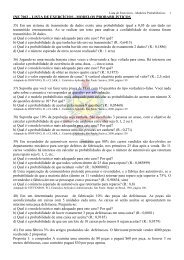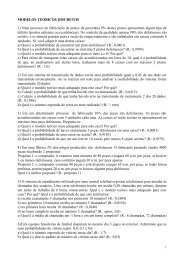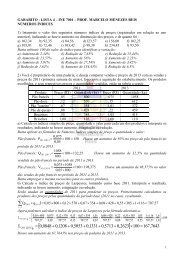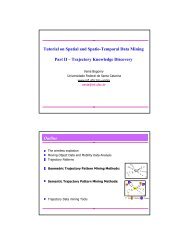Anais do IHC'2001 - Departamento de Informática e Estatística - UFSC
Anais do IHC'2001 - Departamento de Informática e Estatística - UFSC
Anais do IHC'2001 - Departamento de Informática e Estatística - UFSC
Create successful ePaper yourself
Turn your PDF publications into a flip-book with our unique Google optimized e-Paper software.
64<br />
<strong>Anais</strong> <strong>do</strong> IHC’2001 - IV Workshop sobre Fatores Humanos em Sistemas Computacionais<br />
In this work, we argue that to un<strong>de</strong>rstand the dimensions involved in the construction of the<br />
interface as message, it is important to <strong>de</strong>velop a better un<strong>de</strong>rstanding about the dialogue<br />
that occurs among the many parties involved in the <strong>de</strong>sign activity.<br />
3. Design as a Matter of Communication<br />
Design has been un<strong>de</strong>rstood as a technical term referring to a software production step in<br />
which the lines of co<strong>de</strong> are put together according to some software <strong>de</strong>velopment<br />
metho<strong>do</strong>logy. In this work, as used by some influential authors in the area of HCI<br />
[27],[19],[24], the English language usage is a<strong>do</strong>pted for the term, meaning the invention<br />
and organization of any structure.<br />
In or<strong>de</strong>r to <strong>de</strong>sign the message (i.e. the interface), <strong>de</strong>signers and users must engage in a<br />
dialogue using different channels. As Gould and Lewis point out [8], “getting useful <strong>de</strong>sign<br />
information from prospective users is not just a matter of asking”. Designers need to ask<br />
questions, represent the information they get and the solutions they provi<strong>de</strong> in a meaningful<br />
way to check it, perceive users’ questions and reactions and so on [18], [20]. The<br />
<strong>de</strong>signer-user dialogue has been carried out through usability tests in the successive phases<br />
of a <strong>de</strong>sign-implement-evaluate loop that characterizes the <strong>de</strong>sign process, which is, by its<br />
very nature, iterative.<br />
More recently, the importance of the work context in the <strong>de</strong>sign process was wi<strong>de</strong>ly<br />
recognised. Besi<strong>de</strong>s the evaluation of the users’ performances when they interact in<br />
isolation with an artefact, another goal came onto the scene: <strong>de</strong>signers realised that it was<br />
also important to analyse how an interface can reflect users’ work context and support<br />
users’ social interactions to execute their tasks. New approaches, like participatory [15] and<br />
contextual <strong>de</strong>sign [3], were <strong>de</strong>veloped and introduced additional channels in user-<strong>de</strong>signer<br />
communication.<br />
Besi<strong>de</strong>s <strong>de</strong>signer-user communication, the other groups are also engaged in some type of<br />
communication through different channels: <strong>de</strong>signers talk to marketing people, customer<br />
support mediates between <strong>de</strong>velopers and users, external consultants help both users’ and<br />
<strong>de</strong>velopers’ organizations, etc. The use of different channels is related to the needs of the<br />
communication acts: the nature of information <strong>de</strong>sired, the projects’ contexts, the<br />
audience’s language, etc.<br />
Communication Mo<strong>de</strong>ls and the computer as media<br />
To un<strong>de</strong>rstand communication in the <strong>de</strong>sign process, we must first form a coherent<br />
un<strong>de</strong>rstanding of what communication itself involves. Several mo<strong>de</strong>ls for communication<br />
have been presented and discussed by thinkers from diverse philosophical schools. We will<br />
examine some of them in or<strong>de</strong>r to reach the essential aspects of the concept.<br />
For a long time, the <strong>do</strong>minant mo<strong>de</strong>l in the theory of communication was Shannon and<br />
Weaver’s Mathematical Theory of Communication [25]. Groun<strong>de</strong>d in the Theory of<br />
Information as a system of mathematical basis to study the problems of transmitting<br />
messages through physical channels, it is therefore a technique of communication<br />
engineering in which they i<strong>de</strong>ntify source, enco<strong>de</strong>r, channel, noise, <strong>de</strong>co<strong>de</strong>r and receiver of<br />
information, as illustrated by Figure 1.



